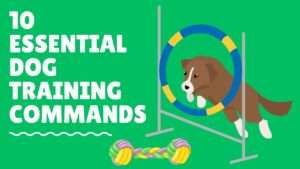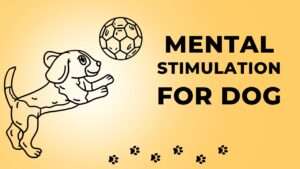Are you looking to impress your friends and family with your dog’s amazing skills? Or perhaps you want to strengthen the bond between you and your furry companion through fun and interactive activities? Dog trick training might just be the perfect solution!
From simple tricks like “sit” and “stay” to more complex maneuvers like “roll over” and “fetch,” teaching your dog tricks not only provides mental stimulation but also strengthens the bond between you and your canine companion. In this complete guide, we’ll explore everything you need to know to get started with dog trick training.
Contents Overview
Why Train Your Dog Tricks?
Dog trick training offers numerous benefits for both you and your furry friend:
- Mental Stimulation: Engaging in training sessions stimulates your dog’s mind, preventing boredom and promoting overall mental well-being.
- Bonding: Training creates a strong bond between you and your dog, fostering trust and communication.
- Obedience: Teaching tricks reinforces basic obedience commands, making your dog more responsive to your cues.
- Socialization: Training provides an opportunity for your dog to socialize with you and other people, promoting good behavior in various environments.
- Fun: Most importantly, trick training is fun! It’s a rewarding experience for both you and your dog, filled with laughter and joy.
Getting Started
Embarking on the journey of dog trick training requires laying down a solid foundation for success. Here’s a comprehensive guide to getting started:
- Assess Your Dog’s Readiness:
Before diving into trick training, it’s essential to evaluate your dog’s readiness and suitability for learning tricks. Consider factors such as age, breed, temperament, and physical health. While dogs of all ages can learn new tricks, puppies may have shorter attention spans and may require shorter, more frequent training sessions.
- Establish Basic Obedience:
Basic obedience forms the cornerstone of successful trick training. Ensure your dog understands fundamental commands such as “sit,” “stay,” “come,” and “down.” These commands serve as building blocks for more advanced tricks and provide a framework for communication between you and your dog.
- Create a Positive Training Environment:
Setting the stage for effective training involves creating a positive and conducive environment for learning. Consider the following:
- Location: Choose a quiet, distraction-free environment for training sessions, such as a spacious room indoors or a fenced backyard. Minimize external stimuli that could divert your dog’s attention.
- Timing: Schedule training sessions when your dog is alert and receptive, typically after meal times or when they’re well-rested. Keep sessions short and enjoyable to prevent mental fatigue.
- Tools and Treats: Equip yourself with essential training tools, including a leash, clicker (optional), and a variety of high-value treats. Choose treats that your dog finds irresistible and reserve them exclusively for training purposes.
- Understand Positive Reinforcement:
Positive reinforcement is a powerful training technique that involves rewarding desired behaviors to encourage their repetition. Here’s how to effectively use positive reinforcement in trick training:
- Timing: Deliver rewards, such as treats, praise, or toys, immediately after your dog performs the desired behavior. This instant feedback helps reinforce the connection between the action and the reward.
- Consistency: Be consistent in your use of rewards to reinforce desired behaviors. Consistency helps your dog understand what is expected of them and motivates them to repeat those behaviors.
- Variety: Experiment with different types of rewards to keep training sessions engaging and exciting for your dog. Mix up treats, verbal praise, and play to maintain their interest and enthusiasm.
- Start with Simple Tricks:
Beginner-level tricks provide a manageable starting point for both you and your dog. Choose simple tricks that align with your dog’s abilities and interests. Some beginner-friendly tricks include “sit,” “stay,” “come,” and “shake paw.”
- Break Down Tricks into Achievable Steps:
Complex tricks can be daunting for dogs to learn all at once. Break down each trick into smaller, achievable steps, and teach them gradually. For example, teaching your dog to “roll over” can be divided into stages such as “down,” “turn head,” and “roll.”
- Practice Patience and Persistence:
Training a dog takes time, patience, and perseverance. Be patient with your dog as they learn new behaviors and skills. Celebrate small victories and progress, even if it’s incremental. Remember that each dog learns at their own pace, so avoid comparing your dog’s progress to others.
- Maintain Consistency:
Consistency is key to successful trick training. Use consistent cues, gestures, and rewards to reinforce desired behaviors. Stick to a regular training schedule, with short, frequent sessions spread throughout the day to maintain momentum and prevent boredom.
Popular Dog Tricks
Teaching your dog tricks is not only a fun way to bond with your furry companion but also provides mental stimulation and promotes obedience. Here are some popular dog tricks along with detailed explanations to help you get started:
- Sit:
Description: The “sit” command is one of the most basic and essential commands for a dog to learn. It teaches your dog to sit on command, which is useful for various situations, including greetings and meal times.
How to Teach:
- Capture the Behavior: Hold a treat in your hand and let your dog see and smell it. Slowly move the treat above your dog’s nose and toward the back of their head.
- Guide the Motion: As your dog’s head follows the treat, their bottom will naturally lower into a sitting position. Use your other hand to gently guide their bottom down if needed.
- Use the Cue: As soon as your dog’s bottom touches the ground, say the cue word “sit” in a clear, upbeat tone. Immediately praise and reward your dog with the treat.
- Repeat and Reinforce: Practice the “sit” command frequently, gradually phasing out the lure until your dog reliably responds to the verbal cue alone. Be patient and consistent in your training.
- Stay:
Description: The “stay” command teaches your dog to remain in one place until released. It’s a valuable command for controlling your dog’s movement and ensuring their safety in various situations.
How to Teach:
- Start with Sit: Begin by commanding your dog to “sit” or “down.” Ensure they are in a relaxed and comfortable position before proceeding.
- Use Hand Signal: Extend your hand in front of your dog with your palm facing them, like a stop sign. Say the cue word “stay” in a firm but calm tone.
- Step Back: Take a small step back while maintaining eye contact with your dog. If they stay in place, praise them and offer a treat as a reward.
- Gradually Increase Distance: Gradually increase the distance between you and your dog while reinforcing the “stay” command. Return to your dog, release them from the stay, and reward them for their compliance.
- Roll Over:
Description: The “roll over” trick is a playful and impressive maneuver that showcases your dog’s agility and coordination. It involves your dog rolling onto their back from a lying down position.
How to Teach:
- Start with Down: Begin with your dog in a lying down position (“down”). Hold a treat near their nose and slowly move it in a circular motion toward their shoulder.
- Guide the Roll: As your dog follows the treat with their nose, they will naturally roll onto their side and then onto their back. Use your hand to guide and support their movement if necessary.
- Use the Cue: As your dog completes the roll, say the cue word “roll over” in a cheerful tone. Immediately praise and reward them with the treat.
- Practice and Patience: Repeat the process, gradually reducing the amount of guidance needed until your dog can perform the roll over independently in response to the verbal cue.
- Fetch:
Description: Fetch is a classic game that taps into a dog’s natural instinct to chase and retrieve objects. Teaching your dog to fetch not only provides physical exercise but also strengthens the bond between you and your pet.
How to Teach:
- Choose a Toy: Start by selecting a favorite toy or object that your dog enjoys playing with. It could be a ball, Frisbee, or plush toy.
- Encourage Retrieval: Show the toy to your dog and encourage them to grab it with their mouth. Use an excited tone of voice and gentle gestures to entice them.
- Throw the Toy: Once your dog takes the toy, throw it a short distance away from you. Encourage them to chase after it by using phrases like “go get it” or “fetch.”
- Reward Retrieval: When your dog retrieves the toy and brings it back to you, praise them enthusiastically and offer a reward, such as a treat or a game of tug-of-war.
- Repeat and Reinforce: Practice the fetch game regularly, gradually increasing the distance of the throws and reinforcing the behavior with rewards. With consistency and patience, your dog will become a fetching pro.
- High Five:
Description: The “high five” trick adds a touch of personality and charm to your dog’s repertoire. It involves your dog lifting their paw and making contact with your hand in response to a cue.
How to Teach:
- Start with Sit: Begin with your dog in a sitting position, facing you. Hold a treat in your hand and show it to your dog to grab their attention.
- Raise Your Hand: Extend your hand toward your dog at about chest level, palm facing you. Encourage them to lift their paw by tapping gently on the underside of their paw or by holding the treat just above their nose.
- Make Contact: As your dog lifts their paw, guide it gently toward your hand. When their paw makes contact with your hand, say the cue word “high five” in an enthusiastic tone.
- Reward and Repeat: Immediately praise and reward your dog with the treat for successfully completing the high five. Repeat the process, gradually phasing out the lure until your dog responds reliably to the verbal cue alone.
Dog Trick Training: Challenges & Solutions
While dog trick training can be a rewarding and enjoyable experience, it’s not without its challenges. Understanding and addressing these challenges effectively is key to ensuring a successful training journey for both you and your furry companion. Here are some common challenges encountered during dog trick training, along with practical solutions:
- Lack of Interest or Motivation:
Challenge: Some dogs may exhibit disinterest or lack of motivation during training sessions, making it challenging to engage them in learning new tricks.
Solution:
- Find the Right Incentive: Experiment with different types of rewards, such as high-value treats, favorite toys, or verbal praise, to find what motivates your dog the most.
- Break Tasks into Smaller Steps: Break down trick training into smaller, achievable steps, and celebrate each success along the way. This approach can help maintain your dog’s interest and build momentum.
- Keep Sessions Short and Fun: Keep training sessions short and engaging to prevent boredom and maintain your dog’s focus. End each session on a positive note, even if it means stopping before your dog loses interest.
- Difficulty Learning New Tricks:
Challenge: Some dogs may struggle to grasp certain tricks, either due to their temperament, learning style, or physical limitations.
Solution:
- Adjust Your Approach: Tailor your training approach to suit your dog’s individual needs and preferences. Some dogs may respond better to visual cues, while others may prefer verbal commands or physical guidance.
- Use Luring Techniques: Utilize luring techniques, such as using treats or toys to guide your dog through the desired behavior. Break down complex tricks into smaller, more manageable steps, and progress gradually as your dog gains confidence.
- Be Patient and Persistent: Rome wasn’t built in a day, and neither are dog tricks. Be patient with your dog and resist the urge to rush through training. Practice consistency and repetition, and celebrate even the smallest signs of progress.
- Distractions and Environmental Factors:
Challenge: Dogs may become easily distracted by environmental stimuli, such as other animals, noises, or unfamiliar surroundings, which can interfere with training sessions.
Solution:
- Start in a Controlled Environment: Begin training in a quiet, familiar environment with minimal distractions, such as your living room or backyard. As your dog becomes more proficient, gradually introduce distractions in a controlled manner.
- Increase Gradually: Gradually increase the level of distraction during training sessions as your dog’s skills improve. This could involve training in different locations, varying the time of day, or introducing mild distractions such as toys or food puzzles.
- Use Management Tools: Consider using management tools such as a leash or harness to maintain control over your dog’s movements and prevent them from wandering off or becoming overly distracted.
- Fear or Anxiety:
Challenge: Some dogs may exhibit fear or anxiety during training sessions, particularly when learning new or unfamiliar tricks.
Solution:
- Create a Safe Environment: Ensure that the training environment is safe, comfortable, and free from potential stressors that may trigger fear or anxiety in your dog.
- Use Positive Reinforcement: Focus on positive reinforcement techniques to build your dog’s confidence and reassure them during training. Offer plenty of praise, treats, and affection for even small attempts or successes.
- Go at Your Dog’s Pace: Respect your dog’s comfort level and avoid pushing them beyond their limits. Break down training tasks into smaller, more manageable steps, and progress at a pace that feels comfortable for your dog.
Bottom Line
Dog trick training is not only a fun and rewarding activity but also a fantastic way to strengthen the bond between you and your furry companion. By following the tips and tricks outlined in this guide, you’ll be well on your way to teaching your dog an impressive repertoire of tricks. Remember to be patient, stay consistent, and most importantly, have fun along the way!































+ There are no comments
Add yours